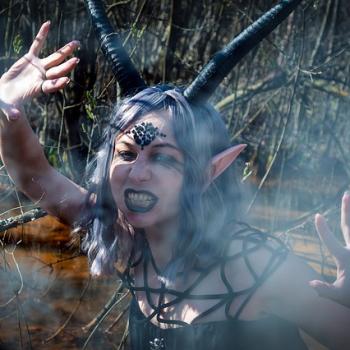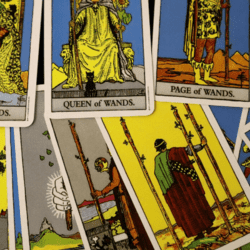There’s nothing like coming face to face with the smell of a dungeon and the torture devices that were used in the past to extract a confession of Witchcraft from screaming souls to let you know that the freedoms we take for granted today are a far cry from those the people of the 16th and 17th century had.
Witch Hunt Capital of the World
In the 1600s, Edinburgh was the torture and witch hunt capital of the world. Even someone pointing at you and calling you a witch in the marketplace was pretty much a death sentence. The conviction process was sadistic and long.
It started with the walking of the witches, where suspects were made to walk or crawl back and forth continuously in front of the Cathedral for days. Stopping even for a second was an admission of guilt. If this test was passed, then the subjects hands and feet were bound, and they were thrown into the city sewerage ditch to sink into the waste and excrement. If by some miracle the victim did not drown, then they were taken to the castle and burned alive.
Torture
Although the use of torture to extract a confession was illegal in England, Ireland and Wales, it was permitted in Scotland.
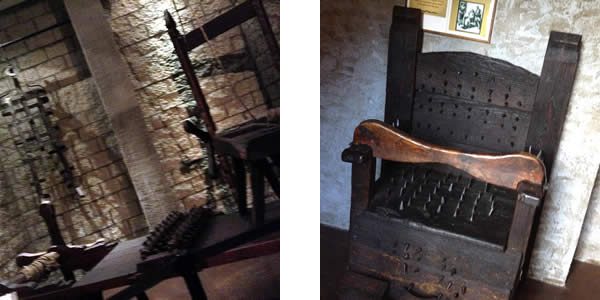
In Scotland, thumb screws and leg crushers were also used. Another, more public and informal type of trial was ‘swimming’ the accused to prove their guilt. The victim’s right thumb would be tied to their left big toe and they would be thrown into a nearby pond or river. If they sank, they were innocent, if they floated, they had been rejected by the water as a servant of the devil.
Edinburgh Castle played a key role in the trial and execution of condemned witches, and an estimated 300 were put to death on the castle’s esplanade. One such figure was Agnes Finnie, an Edinburgh shopkeeper who was charged with 20 counts of witchcraft and sorcery, including placing “so frightful a disease on Beatrix Nisbet, for some other trifling offense, that she lost the use of her tongue”. Arrested in 1644, Agnes was found guilty of witchcraft and held in the castle’s dungeon. After strangulation, her body was burned on the esplanade.

The Accused
Between 1479 and 1722, thousands were accused of witchcraft and were burned alive in Edinburgh. One 1576 record of the execution of Bessie Dunlop states she was burned at Castle Hill for being a member of a coven of eight women and four men, and for receiving herbs from the Queen of the Faeries.
A series of records from 1595 tell of a woman named Alison Balfour who confessed to witchcraft under torture, recanted and was burned alive. Her family met equally gruesome ends simply because they were family members. Balfour’s husband, an eighty-one-year-old man, was pressed under 700 pounds of iron bars. Her son’s legs were destroyed by a torture device, developed by the Scots, called the Boot. Made of iron or wood, the Boot was fastened on the leg and wedges were driven in between the Boot and leg by blows from a mallet. After each blow a question was put to the victim, and the ordeal was continued until he gave the information or fainted. Balfour’s 7-year-old daughter was tortured with thumbscrews. Even the house servant was implicated, tortured and burned at the stake.
Another entry in this ancient record book shows the sheriff of Caithness killing two witches based on the complaint of one William Montgomery. It seems Mr. Montgomery was plagued by cats and blamed the two unlucky women for cursing him with their unwanted presence.
The Story of Agnes Sampson
One of Edinburgh’s most infamous ghost stories involves a well-respected woman of high society named Agnes Sampson who was tortured, tried, and convicted of witchcraft by Scotland’s King James VI in 1592.
Under torture, Agnes suffered the humiliation of being stripped naked and having every hair shaved from her body. She was burned with ropes pulled across her face and bare breasts. Agnes was made to wear a witches bridle which pierced her cheeks and tongue with sharp spikes and was fastened by spiked iron spikes to the wall of her cell. This sadistic torture was intended to bring forth a confession. There is no doubt that this torture succeeded in bringing about the required result in virtually all cases as in this one. Agnes confessed to working with other witches to conjure up a storm in order to sink a ship carrying King James of Denmark.
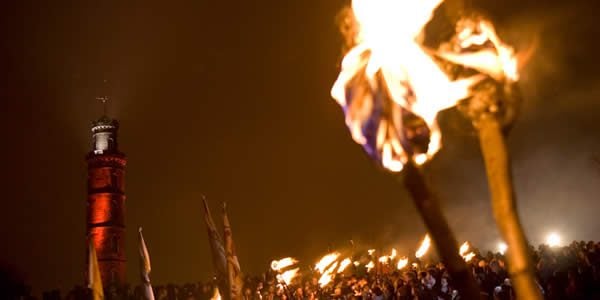
The Queen of Scottish Witches
Isobel Gowdie, the renowned “Queen of Scottish Witches”, was a young Scottish housewife who was tried for witchcraft in 1662. Her detailed confession, apparently achieved without the use of torture, relates her fifteen years of involvement with the Devil, and offers one of the most detailed looks at European witchcraft folklore at the end of the era of witch-hunts.
According to her story, she had initially encountered Satan at the church at Auldearne, and made a pact with him, beginning with her renunciation of Christianity. The Devil placed his mark on her shoulder, sucked some of her blood, and re-baptized her with it, giving her a new name, Janet. She confessed her new faith while placing one hand on her head and one on the bottom of her foot.
In her four separate confessions given over a six-week period, she claimed to have flown through the air to her coven meetings (a group of 13 that would later become standard fare in witchcraft accounts), slaying any Christians she passed unless they were able to bless themselves first. The Devil himself would attend their Sabbats and would whip them if they had displeased him in some way.
Gowdie also claimed to have been entertained regularly by the King and Queen of the Fairies, in the land of the elves “under the hills”, which she entered through various mounds and caverns. It was the fairies who taught her to fly by climbing beanstocks and cornstraws and shouting, “Horse and Hattock, in the Devil’s name!” She also claimed to have the ability to transform herself at will into an animal such as hare or a cat, and to be able to affect the weather.
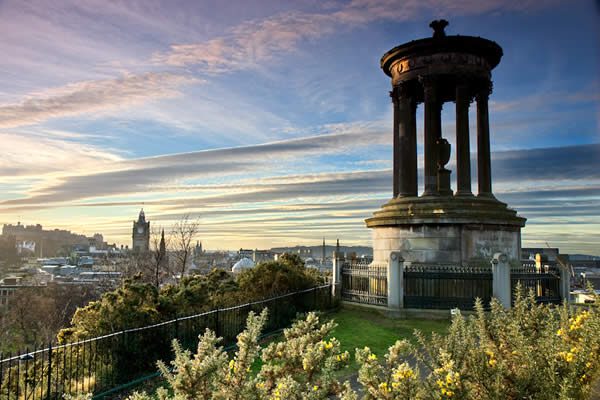

Patheos Pagan on Facebook.

the Agora on Facebook
Outside the Circle is published twice monthly on Thursdays on Agora. Subscribe via RSS or e-mail!
Please use the links to the right to keep on top of activities here on the Agora as well as across the entire Patheos Pagan channel.










